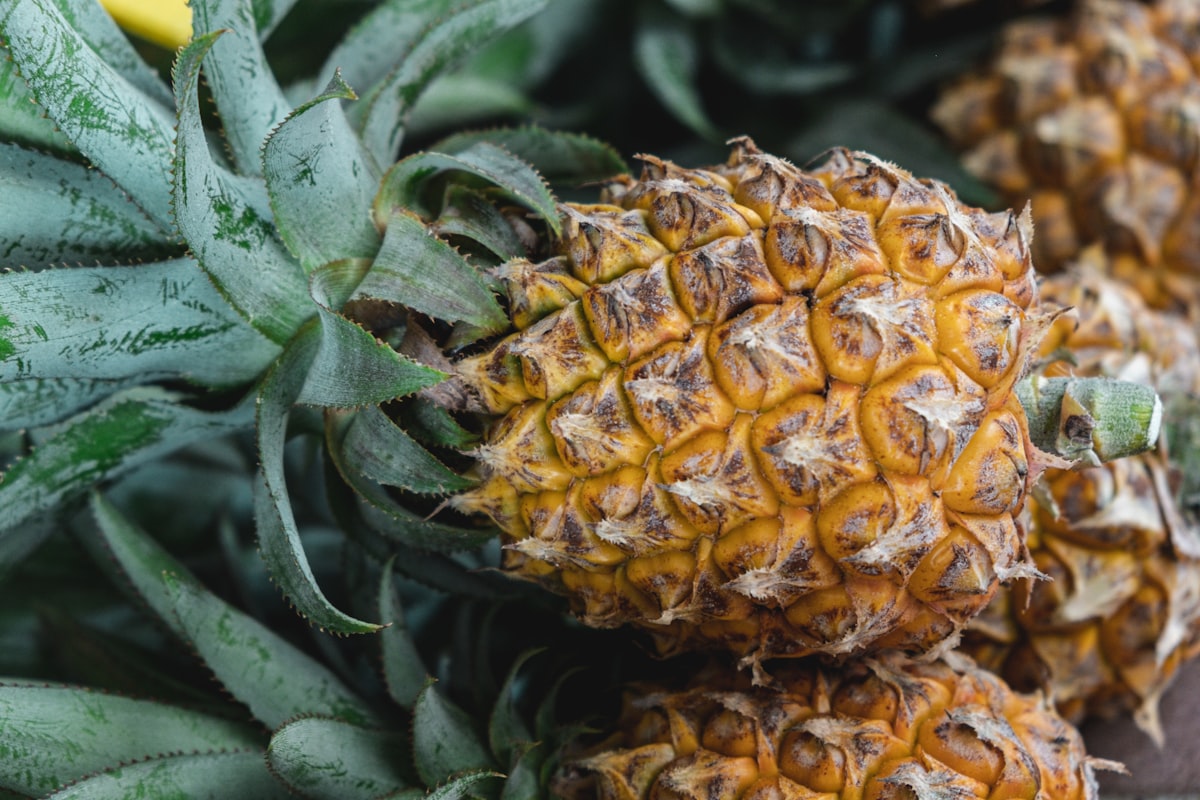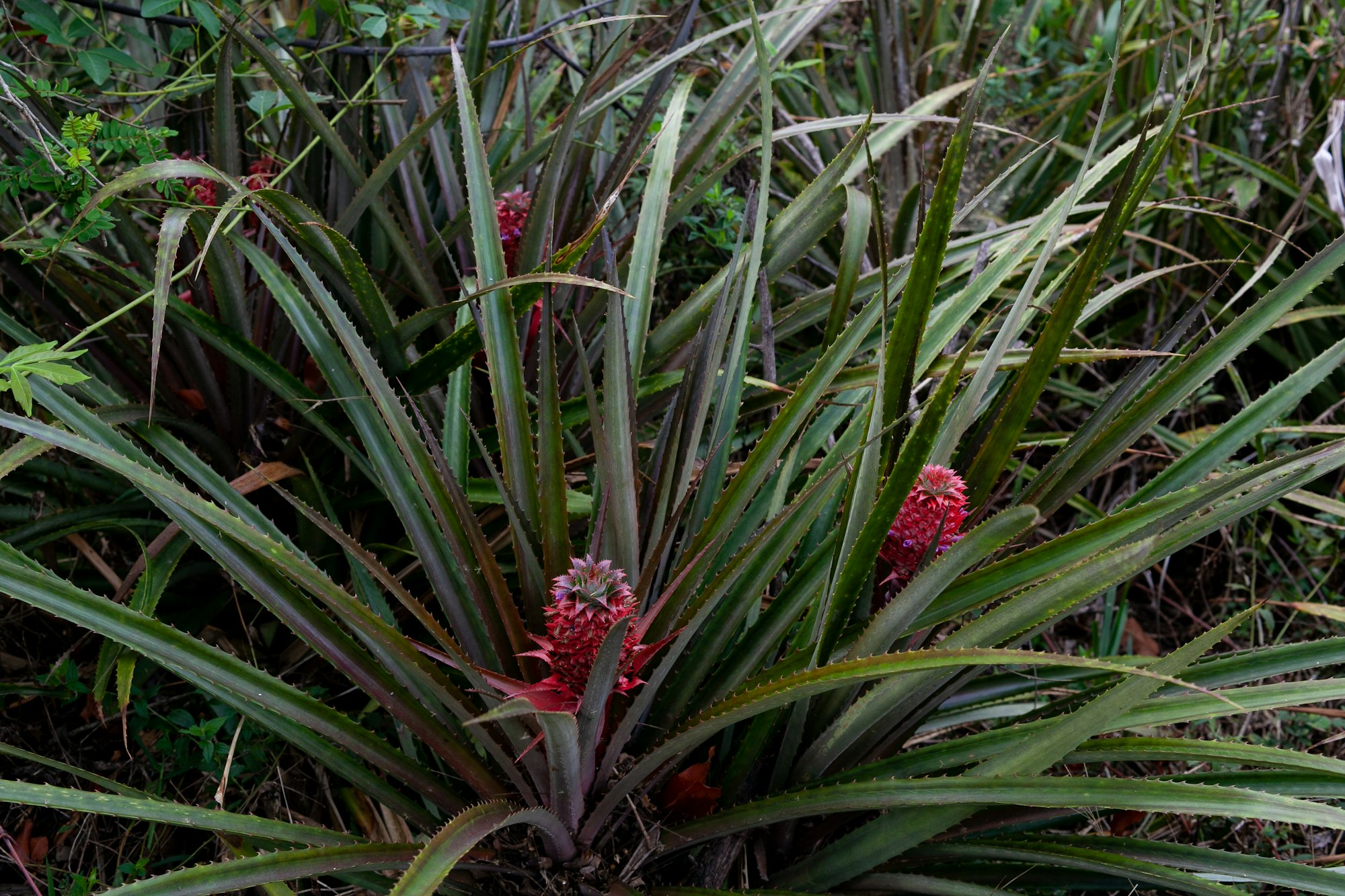How to Grow Pineapple
Growing your pineapple may seem challenging, but with the right conditions and a little patience, you can enjoy the satisfaction of cultivating this tropical fruit in your own home or garden.

Table of Contents
Pineapples can be grown indoors as houseplants or outdoors in USDA zones 11 and 12, ensuring you have the appropriate environment for this unique and flavorful plant.
Choose a fresh pineapple with green leaves and a ripe, golden brown fruit to grow a pineapple.
The process begins with planting the pineapple crown, ensuring you have selected a location with full to partial sun and slightly acidic soil.
You'll soon be on your way to nurturing your pineapple plant by following proper care instructions.
About Pineapple Plant
Pineapple (Ananas comosus) is a tropical fruit from the bromeliad family.
It is native to South America and thrives best in tropical climates, with temperatures between 68 and 84 degrees Fahrenheit.
Growing pineapple plants at home can be a rewarding experience.
Whether indoors or outdoors, pineapples require at least six hours of bright, indirect light daily and well-draining sandy, loamy soil with a pH of 4.5 to 6.5.
Place your pineapple plant near a south-facing window to provide optimal lighting when grown indoors.
Growing Pineapple
To start planting your pineapple plant, first, choose a fresh pineapple with green leaves and golden brown skin.
Carefully remove the crown by twisting it or using a sharp knife, and peel off the lower leaves to expose about an inch of the base.
Allow the crown to dry for a few days before planting, which helps prevent rotting.
Choose a suitable planting container with drainage holes, and fill it with a cactus and citrus potting mix with a pH of 4.5 to 6.5.
Plant the pineapple crown by placing the exposed bottom portion into the soil and gently pressing down to ensure good contact with the roots.
Place your pineapple plant near a south-facing window receiving at least six hours of bright, indirect light daily.
Regularly monitor soil moisture and water your pineapple plant as needed, taking care not to overwater.

Caring for Pineapple Plant
Sun and Temperature
Your pineapple plant requires bright, indirect sunlight for optimal growth.
Aim to maintain a temperature between 68 and 84 degrees Fahrenheit, as temperatures above 90 degrees Fahrenheit or below 60 degrees Fahrenheit could negatively affect the plant's growth and health.
Water and Humidity
Water your pineapple plant when the top layer of soil feels dry, keeping the soil consistently moist but not soaking wet.
In addition, maintain a high humidity by misting the plant occasionally or placing it near a humidifier.
Soil and Fertilizing
For a healthy pineapple plant, use a well-draining potting mix of perlite, peat moss, and sandy, loamy soil.
Apply a balanced fertilizer every two months during the growing season to provide the necessary nutrients for the plant's growth.
Pruning and Propagation
To propagate a pineapple plant, search for ripe fruit and healthy lower leaves to detach and replant.
Additionally, watch for sucker shoots growing from the plant's base that can be easily separated and propagated in a new growing environment.
Troubleshooting Plant Problems
Growing Problems
When growing a pineapple plant, providing the right care is important.
Ensure your plant gets at least six hours of bright, indirect light daily and is placed in sandy, loamy soil with a pH of 4.5 to 6.5.
Pineapples need a warm environment, a temperature above 65ºF, and at least 12 hours of direct light during summer.
Pay close attention to watering, as overwatering and underwatering can cause issues. Overwatering may lead to root rot, identified by a foul smell and blackened roots.
To prevent this, allow the soil to dry slightly between waterings, and consider repotting if the rotting continues.
Pests and Diseases
Pest infestations can also harm your pineapple plant.
Common pests include scale insects and mealybugs, which can be identified by their sticky, web-like residue and honeydew production.
To treat these pests, use a soft brush and soapy water to remove them from your plant, or apply neem oil or insecticidal soap for larger infestations.
Nematodes are another issue that can affect pineapple plants, particularly those grown indoors or in a greenhouse.
Preventing nematode infestations may require using clean, sterile growing mediums or implementing a three-year crop rotation with grasses like green foxtail grass if growing outdoors.
Conclusion
Growing your own pineapple can be a rewarding and exciting endeavor.
Your pineapple plants will thrive by providing proper care and conditions, such as sandy, loamy soil with a pH between 4.5 and 6.5, as well as ample sunlight.
Remember to be patient; developing roots and fruit can take some time.
With dedication and the right environment, you will soon enjoy homegrown pineapples, adding a tropical delight to your garden and plate.
Frequently Asked Questions
How long does it take to grow a pineapple?
It generally takes 18 to 24 months for a pineapple plant to grow and produce fruit. However, the fruit might take six more months to ripen and be ready for harvest.
Do you need two pineapple plants to produce fruit?
No, you don't need two pineapple plants to produce fruit. Pineapple plants are self-pollinating, so only one plant is needed to produce fruit.
How to grow pineapple in different climates?
Pineapples thrive in warm, tropical climates (USDA zones 11 and 12).
If you live in a colder climate or want to grow them indoors, ensure they receive at least 6 hours of indirect sunlight daily and keep them near a south-facing window or under a grow light.
Can you grow pineapple in a container?
You can grow pineapple in a container if it's large enough to accommodate the plant's growth.
Ensure the container has proper drainage and use well-draining, sandy, loamy soil with a pH of 4.5 to 6.5, like a cactus and citrus potting mix.


